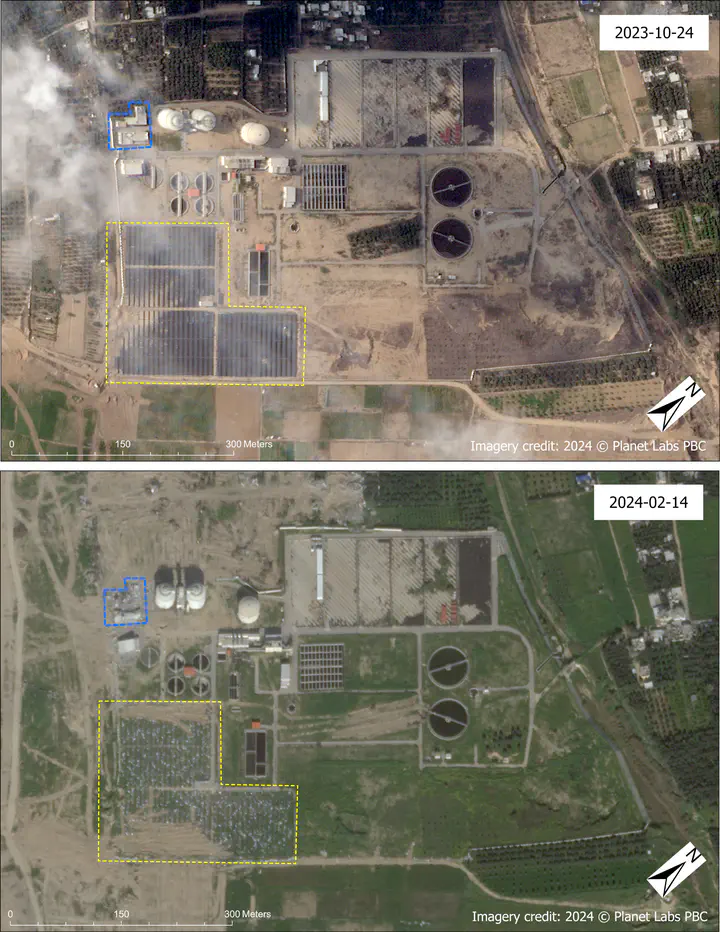Public health implications of satellite-detected widespread damage to WASH infrastructure in the Gaza Strip

Abstract
The Israeli military offensive in the Gaza Strip since October 7, 2023, has resulted in widespread attacks across the territory, damaging water, sanitation, and hygiene (WASH) infrastructure. Recent public health assessments show an increased prevalence of waterborne diseases — including polio, Hepatitis A, and gastrointestinal conditions — linked to curtailed access to safe water, exposure to contaminated water, and non-functional WASH infrastructure. However, there is a persistent lack of information on the locations and details of damaged WASH infrastructure across the Gaza Strip that can guide short-term water interventions and inform long-term recovery efforts. This study provides an assessment of the status of Gaza Strip WASH infrastructure through analysis of damage using open-source earth observation and geospatial data. Drawing from six sources, we identified 239 WASH sites spanning 11 types of infrastructure across the Gaza Strip and analyzed very-high resolution satellite imagery at each site to assess indicators of damage incurred through late February 2024. We found that 49.8% (n = 119) of sites had been damaged, including at least half of the desalination plants, water pumping stations, and water towers that formed the backbone of Gaza’s WASH infrastructure prior to the escalation of conflict. We observed WASH infrastructure damage in all five governorates, though damage was most pronounced in North Gaza, Gaza, and Khan Yunis Governorates. Due to limited access to multiple sources of satellite imagery, the practical impossibility of creating a comprehensive pre-conflict WASH infrastructure dataset, and the limitation of our scope amid ongoing hostilities, these findings likely represent a conservative underestimate of total WASH infrastructure damage. While this research does not attribute any individual attack to a specific belligerent, the breadth of WASH infrastructure damage as a result of Israel’s invasion in the Gaza Strip points to grave public health consequences, which will have long-lasting repercussions for morbidity and mortality.